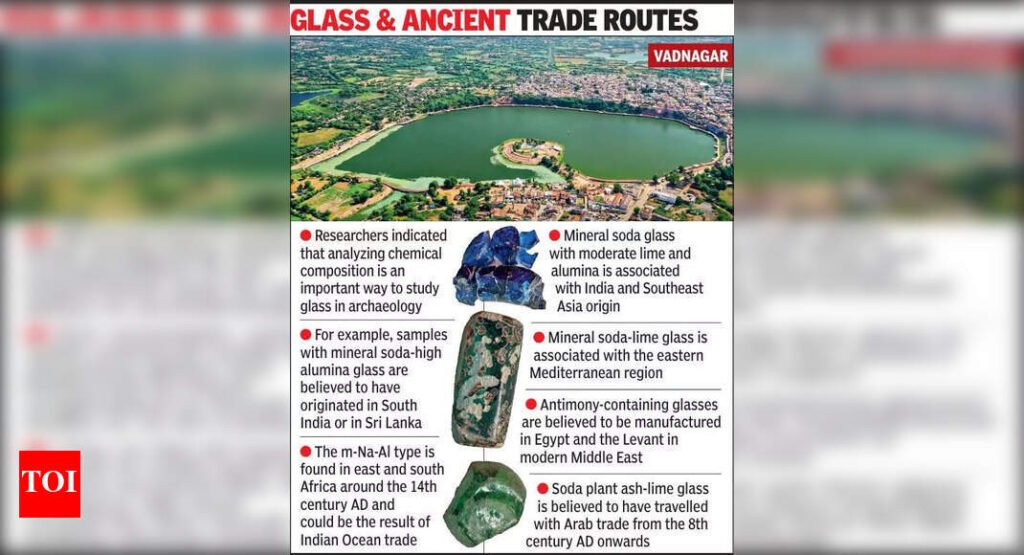Ahmedabad: Tiny beads, fragments of bangles, or other objects made of glass from Vadnagar in north Gujarat have shed light on the nature of the town’s connections with far-flung places, ranging from China on one side to the Mediterranean Sea on the other. A team of researchers from India and the US studied the composition of the glass found from excavations and correlated it with known samples associated with specific regions of the world, placing the ancient town with over 2,000 years of continuous history on the trade map of ancient India.The study, ‘Indian Ocean Connections and Regional Trade: An Elemental and Isotopic Study of the Glass of Vadnagar, Gujarat,’ by Laure Dussubieux from the Field Museum in Chicago; Alok Kumar Kanungo from IIT Gandhinagar; Yadubir Singh Rawat from the Archaeological Survey of India (ASI); and Pankaj Sharma from the Gujarat state directorate of archaeology and museums, was recently published in the Journal of Archaeological Science: Reports, an Elsevier publication.Gujarat’s unique position on the Indian Ocean has favoured long-distance trade, which is evident from the presence of significant quantities of glass objects with compositions typical of the east Mediterranean basin and the Middle East. Glass exchanges via the Persian Gulf and the Red Sea were likely bi-directional, with objects travelling east to Gujarat and also travelling west from the state to the Middle East or Egypt, as mentioned in the study.The researchers also found a type of glass believed to be produced in Gujarat, possibly for local demand. For the study, the researchers chose 47 representative samples from over 500 artefacts excavated from the site. These ranged from beads, decorative items, bangles, glass shards and tubes among others, indicating a wide range of glass objects. The researchers used modern techniques such as laser ablation and spectrometry to understand the composition of the glass.The glasses were divided into groups such as soda-rich, potash-rich, and contents of alumina and lime, among others. According to the study, the potash glass dates from the 1st century BC to the 1st century AD, whereas those with mineral soda flux and sand with variable proportions of lime and alumina date to the 3rd century BC to the 1st century AD. The later samples with soda plant ash glass date to the 14th-15th centuries AD.


